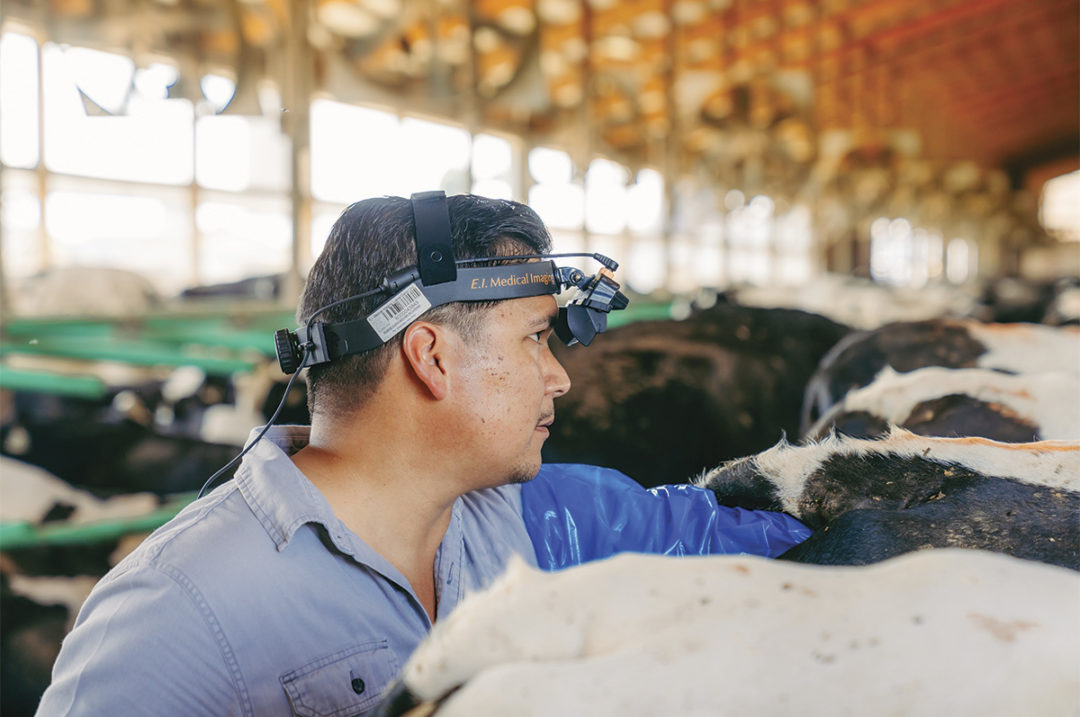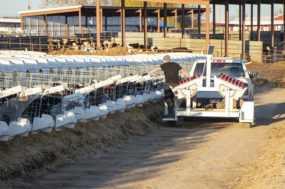In the dairy industry, we are always on a quest for new, innovative tools that will enhance farm performance and profitability. Good old competition as well as the pressures to feed more efficiently, create better cattle living conditions and improve animal health and well-being drives us to adopt new technologies.
In the realm of reproduction, technologies such as artificial insemination and advanced semen processing have helped us create pregnancies more efficiently and, with that, has come the need to improve the accuracy and efficiency of pregnancy diagnosis.
A game changer in reproductive management
Today, bovine ultrasound is used to diagnose pregnancies, and even more importantly, to diagnose open cows and return them to breeding protocols. The game changer is the fact that these ultrasound machines have become more portable and user friendly – to the point where dairy producers and on-farm reproductive specialists can more easily utilize ultrasound equipment if they desire.
Along with improved portability, today’s ultrasound machines feature higher-quality images. Improved imagery enables a wider audience to use the machines for identifying pregnancies at earlier stages with fewer errors.
Complementing the improved technology is the more widespread availability of effective training for producers and farm staff. Comprehensive training programs focus on understanding how ultrasound works, how to operate the ultrasound device and the interpretation of results. Plus, this training is available in a variety of formats, including multimedia resources like video tutorials and online webinars, articles and more. The various training material formats and the use of user-friendly training modules help ensure users can acquire the skills needed for proficient ultrasound use, regardless of their technical background.
There is no doubt that one of the most important aspects of ultrasound training is gaining hands-on experience. In-person workshops with a trainee and trainer being side by side and behind a cow helps to build and enhance the trainee’s confidence in using ultrasound as part of routine reproductive management practices. In addition to refining ultrasound technique, in-person training allows for guidance, discussion and learning on real-time scenarios, bringing an unprecedented level of practicality to the learning process. The opportunity to address specific questions and challenges in the on-farm environment where ultrasounding takes place helps ensure that the farm staff or producer gain the competencies needed to confidently use ultrasound technology.
Economic pressures and the role of ultrasound in optimizing production costs
In the face of fluctuating milk prices in recent years, dairy farmers have faced economic pressures, compelling them to seek ways to optimize production costs. Each day an individual cow remains open presents a financial challenge, with estimates suggesting a cost ranging between $3 to $5 per day. Recognizing the urgency to reduce open days, farmers have turned to ultrasound technology as a strategic tool to identify non-pregnant cows swiftly.
The real financial impact lies in the ability of ultrasound to provide farmers with timely information, enabling them to make informed decisions on when and where to intervene in the breeding cycle. By determining the activity status of the ovary, farmers can strategically plan how to use synchronization protocols to bring these cows back into heat more effectively. This level of precision in reproductive management contributes to the economic efficiency of dairy operations.
Moreover, in many instances, the integration of ultrasound technology into dairy farming practices has strengthened the collaboration between farmers and veterinarians. As farmers become adept at using ultrasound for reproductive management, veterinarians find themselves equipped with valuable data during routine health checkups. This collaborative approach ensures that any potential health issues are detected early, contributing to the overall health and productivity of the dairy herd.
A precision tool for timely decision-making
The integration of ultrasound technology into the reproductive management practices of U.S. dairy farms has ushered in a new era of efficiency and precision. The evolution of ultrasound machines, coupled with farmer-friendly training programs, has made ultrasound technology more accessible than ever before. This accessibility not only empowers farmers to solve their own problems related to reproductive management but also positions ultrasound as a crucial tool for veterinarians striving to meet the demands of their increasingly busy agendas.
The once intimidating task of ultrasounding can become a routine and manageable aspect of dairy farming, contributing to the overall success and sustainability of the industry. As technology continues to advance, the synergy between farmers, veterinarians and ultrasound technology will likely lead to even more innovative solutions, further optimizing the reproductive health and productivity of dairy herds across the U.S.
Rules and regulations regarding bovine ultrasounding vary by state. Consult with your local veterinarian for more information on ultrasounding and what practices may be best for your operation.








